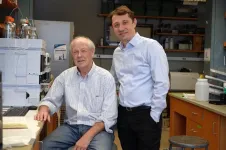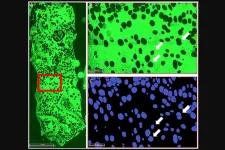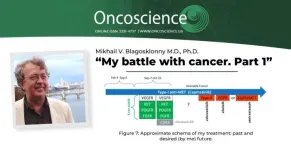(Press-News.org) This study considers the perspectives of primary care physicians (PCPs) and urologists on what facilitates and what creates barriers to active surveillance (AS) care for men with low-risk prostate cancer. Researchers conducted in-depth, semi-structured interviews with 19 PCPs (9 female, 4 in community practices, 15 in academic medical centers) and 15 urologists (3 female, 5 in private practice, 3 in academic medical centers) between June 2020 and March 2021. Their goal was to assess interviewees’ knowledge of AS, what factors they felt influence adherence to follow-up testing, and their preferences concerning PCPs’ and urologists’ roles in team-based care delivery.
Both PCPs and urologists noted the importance of patient education. Patients who understand AS are more likely to select it and adhere to follow-up. While urologists were most knowledgeable about AS, PCPs may lack a good general understanding of AS as well as its follow-up protocols and how to interpret test results. They may find it difficult to explain AS to their patients and often defer to urologists.
Both PCPs and urologists recognized that patients can become lost to follow-up. One way to prevent this is for doctors to communicate more directly with each other about a shared patient’s treatment (e.g., by phone instead of electronic health records). PCPs should discuss urologist visits with their patients. However, PCPs and urologists tended to agree that the PCP role in AS is mainly supportive, with urologists handling follow-up care.
What We Know: Over the past 20 years, U.S. national guidelines for managing care for men with low-risk prostate cancer have moved away from surgery or radiation, with their risk of overtreatment and harmful side effects, in favor of active surveillance (AS). AS involves routine urologist visits, prostate-specific antigen (PSA) lab testing, and serial tumor burden reassessment with magnetic resonance imaging (MRI) or prostate biopsy at recommended intervals. As of 2021, AS has increased to nearly 60% nationwide, though adherence to treatment and follow-up have been uneven, and some men whose condition is stable may receive more intensive treatment than they need. At the same time, patients are increasingly involving their PCPs in their cancer care.
What This Study Adds: While prior studies have addressed the role of PCPs in team-based care delivery for cancer survivors, PCPs’ role in AS care for men with low-risk prostate cancer remains unexplored. The PCPs and urologists interviewed for this study revealed how they view their complementary roles in AS care. Clear communication—between doctors and patients as well as among care team members—is essential. Urologists have greater knowledge of AS and take the lead in managing treatment for patients with low-risk prostate cancer.
Primary Care Physician and Urologist Perspectives on Optimizing Active Surveillance for Low-Risk Prostate Cancer
Archana Radhakrishnan, MD, MHS, et al.
Department of Internal Medicine, University of Michigan, Ann Arbor, MI
Center for Clinical Management Research, VA Ann Arbor Healthcare System, Ann Arbor, MI
PRE-EMBARGO LINK (Link expires at 5 p.m. EDT Jan. 22, 2024)
PERMANENT LINK
END
Primary care physicians and urologists work together to provide optimal care for men with low-risk prostate cancer
This study considers the perspectives of primary care physicians (PCPs) and urologists on what facilitates and what creates barriers to active surveillance (AS) care for men with low-risk prostate cancer
2024-01-22
ELSE PRESS RELEASES FROM THIS DATE:
Patients who obtained telemedicine medication abortions (TeleMAB) through primary care have positive feelings about their experience
2024-01-22
This study explores patients’ experiences and perspectives on obtaining telemedicine medication abortions (TeleMAB) through their primary care health system. Researchers conducted in-depth phone interviews with 14 English, Spanish, and/or Portuguese-speaking patients, ranging in age from 26 to 42, who received a TeleMAB between July 2020 and December 2021 from a large primary care safety-net community health system in Massachusetts. Thirteen of the interviewees provided demographic information. All 13 identified as female, and 10 had children ...
An update on a 2015 report shows that gabapentinoid usage in the U.S. has continued to climb
2024-01-22
Gabapentinoids are commonly prescribed for an array of off-label conditions, including management of chronic pain. Updating their 2015 report on gabapentinoid usage in the U.S., researchers used the 2002–2021 Medical Expenditure Panel Survey (MEPS) to investigate the proportion of the adult population using gabapentinoids, medications, and diagnoses associated with users, and the likelihood of starting, stopping, or continuing gabapentinoids. They found that gabapentinoid use has increased from 4.0% in 2015 to 4.7% in 2021. ...
The serious risks and high costs of monoclonal antibodies may outweigh the benefits for patients with Alzheimer dementia
2024-01-22
Researchers performed a meta-analysis of randomized trial studies that compared the use of amyloid-reducing monoclonal antibodies (MABs) in patients with Alzheimer dementia at a dose consistent with that used in Phase 3 or FDA approval trials with the use of a placebo. Their purpose was to evaluate clinically meaningful benefits and harms of MABs to these patients. For inclusion in this meta-analysis, the RCT studies had to include adult participants with cognitive impairment or Alzheimer disease of any severity and report at least one clinically relevant benefit or harm to participants after at least one year. The research team identified 19 such publications that evaluated ...
Annals of Family Medicine January/February 2024 Tip Sheet
2024-01-22
EHR Workload Continues to Grow for Primary Care Physicians
The study evaluated recent trends in primary care physicians’ (PCPs) electronic health record (EHR) workload. Prior to and early in the COVID-19 pandemic, PCPs spent more time in the EHR and received more messages than physicians in other specialties, but it is unclear if the pandemic further accelerated the growth of PCPs’ EHR workload. Researchers observed EHR usage of 141 academic PCPs practicing family medicine, internal medicine, and general pediatrics within the University of Wisconsin-Madison health system, which ...
A quality improvement intervention links high-risk prenatal patients at safety-net health centers with primary care
2024-01-22
Researchers assessed the development and implementation of a quality improvement learning collaborative’s (QILC) intervention to link high-risk prenatal patients with primary care. The aims of the study were twofold: to identify any quantitative impact of the intervention on postpartum and primary care utilization for high-risk prenatal patients and to explore the Federally Qualified Health Center (FQHC) participants’ experiences of working with a QI collaborative.
Using information from patients’ charts and/or ...
A new drug candidate can shrink kidney cysts
2024-01-22
Autosomal dominant polycystic kidney disease (ADPKD), the most common form of polycystic kidney disease, can lead to kidney enlargement and eventual loss of function. The disease affects more than 12 million people worldwide, and many patients end up needing dialysis or a kidney transplant by the time they reach their 60s.
Researchers at MIT and Yale University School of Medicine have now found that a compound originally developed as a potential cancer treatment holds promise for treating ADPKD. The drug works by exploiting kidney cyst cells’ vulnerability to oxidative stress — a state ...
Bone marrow adipocytes provide early sign of progression from MGUS to multiple myeloma
2024-01-22
A new research perspective was published in Oncotarget's Volume 15 on January 16, 2024, entitled, “Bone marrow adipocytes provide early sign for progression from MGUS to multiple myeloma.”
Multiple Myeloma (MM) is the second most common hematological malignancy and is characterized by clonal expansion of malignant plasma cells in the bone marrow. In spite of recent advances in the field of MM, the disease has remained incurable. MM is preceded by a premalignant state known as monoclonal gammopathy of undetermined significance (MGUS), with a risk of progression to MM of 1% per year. Establishing a scalable approach that refines ...
Dr. Blagosklonny’s battle with cancer (Part 1)
2024-01-22
On January 3, 2024, Mikhail V. Blagosklonny M.D., Ph.D., from Roswell Park Comprehensive Cancer Center published a new brief report in Oncoscience (Volume 11), entitled, “My battle with cancer. Part 1.”
“In January 2023, diagnosed with numerous metastases of lung cancer in my brain, I felt that I must accomplish a mission. If everything happens for a reason, my cancer, in particular, I must find out how metastatic cancer can be treated with curative intent. This is my mission now, and the reason I was ever born. In January 2023, I understood the meaning of life, of my life. I was born to write this article. In this article, I argue that monotherapy with ...
Don’t blame the sharks: Research led by UMass Amherst reveals why more hooked tarpon are being eaten
2024-01-22
In wave-making research recently published in Marine and Coastal Fisheries, a team of researchers, led by biologists at the University of Massachusetts Amherst, has quantified the rate at which great hammerhead sharks are eating Atlantic tarpon hooked by anglers at Bahia Honda, Florida—one of the prime tarpon fishing spots in the Florida Keys.
Called the “depredation rate,” the team found that 15.3% of tarpon that were hooked by anglers and fought for more than five minutes were eaten while still on the line. But the researchers also show that this is not necessarily a sign that the ecosystem is out of balance. To the contrary, increased reports ...
Shallow soda lakes show promise as cradles of life on Earth
2024-01-22
Charles Darwin proposed that life could have emerged in a “warm little pond” with the right cocktail of chemicals and energy. A study from the University of Washington, published this month in Communications Earth & Environment, reports that a shallow “soda lake” in western Canada shows promise for matching those requirements. The findings provide new support that life could have emerged from lakes on the early Earth, roughly 4 billion years ago.
Scientists have known that under ...
LAST 30 PRESS RELEASES:
Why nail-biting, procrastination and other self-sabotaging behaviors are rooted in survival instincts
Regional variations in mechanical properties of porcine leptomeninges
Artificial empathy in therapy and healthcare: advancements in interpersonal interaction technologies
Why some brains switch gears more efficiently than others
UVA’s Jundong Li wins ICDM’S 2025 Tao Li Award for data mining, machine learning
UVA’s low-power, high-performance computer power player Mircea Stan earns National Academy of Inventors fellowship
Not playing by the rules: USU researcher explores filamentous algae dynamics in rivers
Do our body clocks influence our risk of dementia?
Anthropologists offer new evidence of bipedalism in long-debated fossil discovery
Safer receipt paper from wood
Dosage-sensitive genes suggest no whole-genome duplications in ancestral angiosperm
First ancient human herpesvirus genomes document their deep history with humans
Why Some Bacteria Survive Antibiotics and How to Stop Them - New study reveals that bacteria can survive antibiotic treatment through two fundamentally different “shutdown modes”
UCLA study links scar healing to dangerous placenta condition
CHANGE-seq-BE finds off-target changes in the genome from base editors
The Journal of Nuclear Medicine Ahead-of-Print Tip Sheet: January 2, 2026
Delayed or absent first dose of measles, mumps, and rubella vaccination
Trends in US preterm birth rates by household income and race and ethnicity
Study identifies potential biomarker linked to progression and brain inflammation in multiple sclerosis
Many mothers in Norway do not show up for postnatal check-ups
Researchers want to find out why quick clay is so unstable
Superradiant spins show teamwork at the quantum scale
Cleveland Clinic Research links tumor bacteria to immunotherapy resistance in head and neck cancer
First Editorial of 2026: Resisting AI slop
Joint ground- and space-based observations reveal Saturn-mass rogue planet
Inheritable genetic variant offers protection against blood cancer risk and progression
Pigs settled Pacific islands alongside early human voyagers
A Coral reef’s daily pulse reshapes microbes in surrounding waters
EAST Tokamak experiments exceed plasma density limit, offering new approach to fusion ignition
Groundbreaking discovery reveals Africa’s oldest cremation pyre and complex ritual practices
[Press-News.org] Primary care physicians and urologists work together to provide optimal care for men with low-risk prostate cancerThis study considers the perspectives of primary care physicians (PCPs) and urologists on what facilitates and what creates barriers to active surveillance (AS) care for men with low-risk prostate cancer




